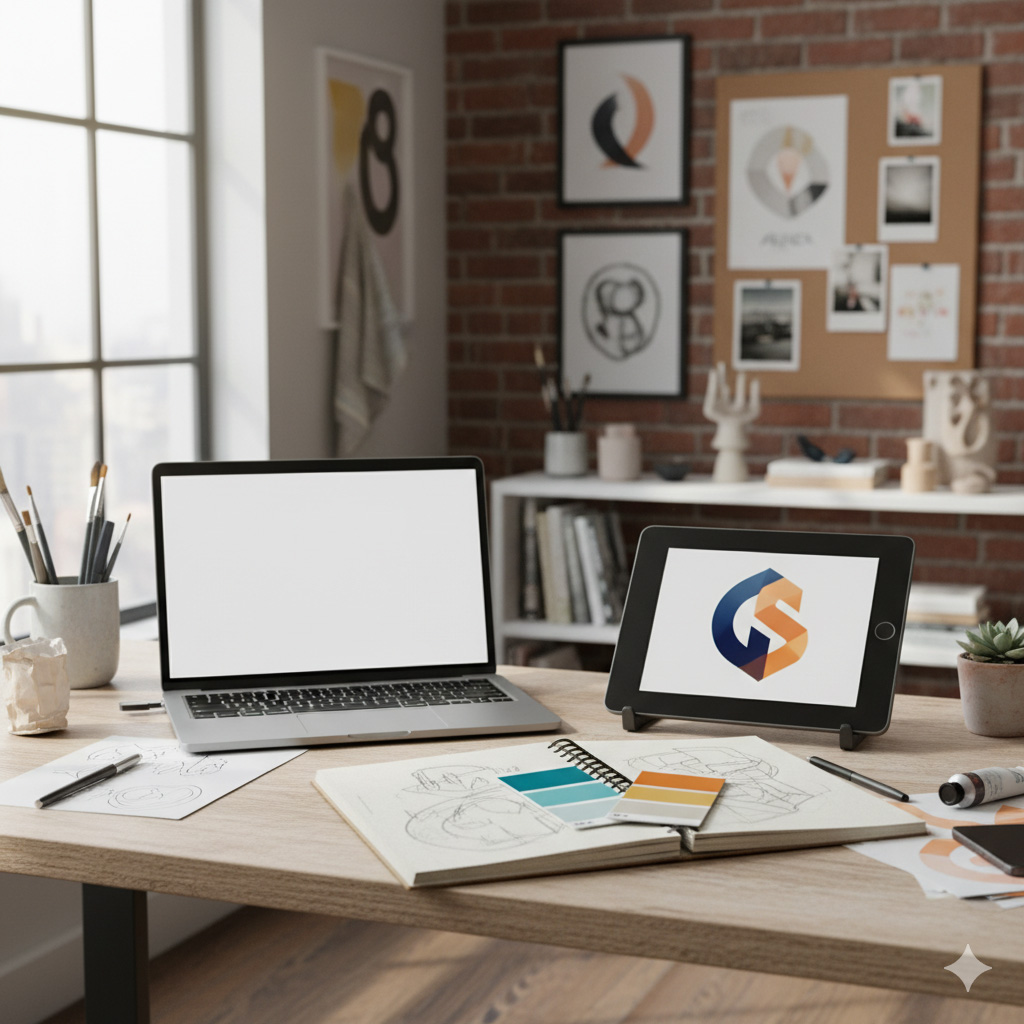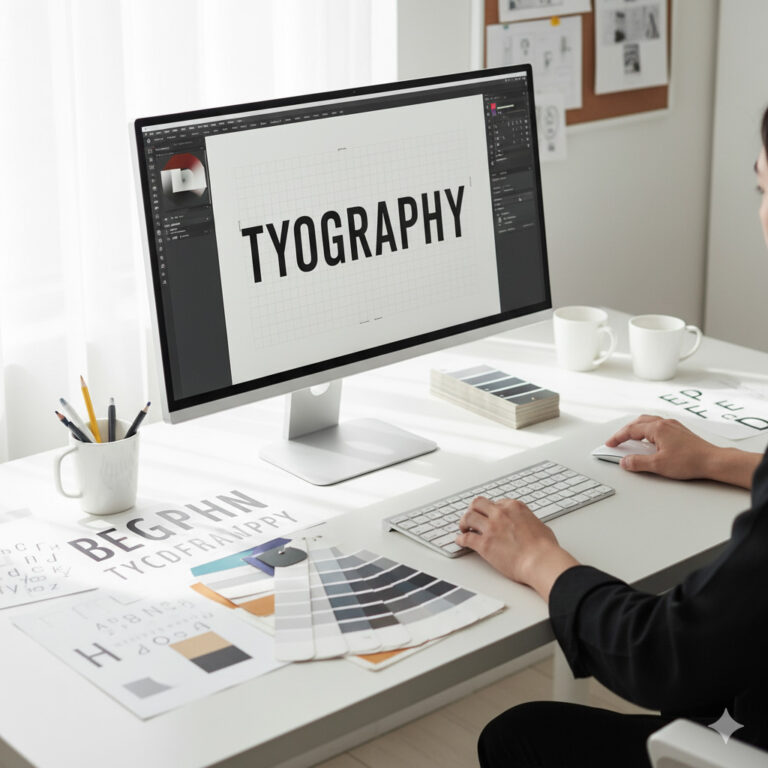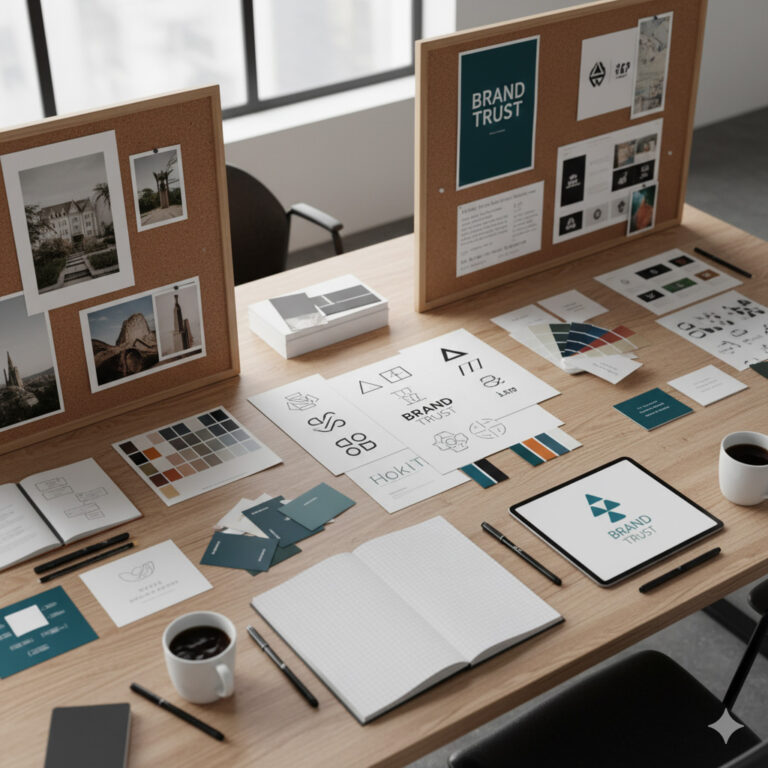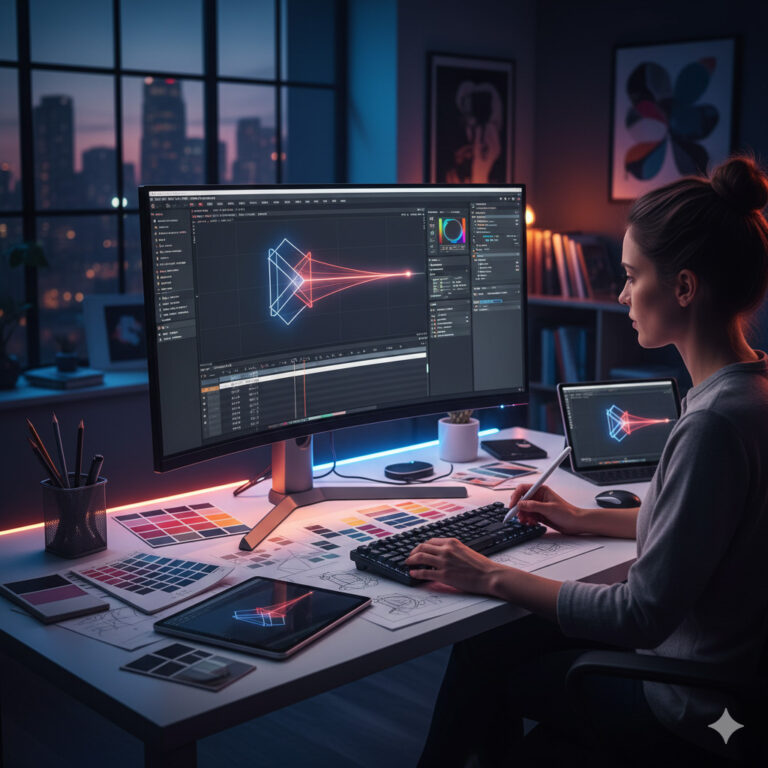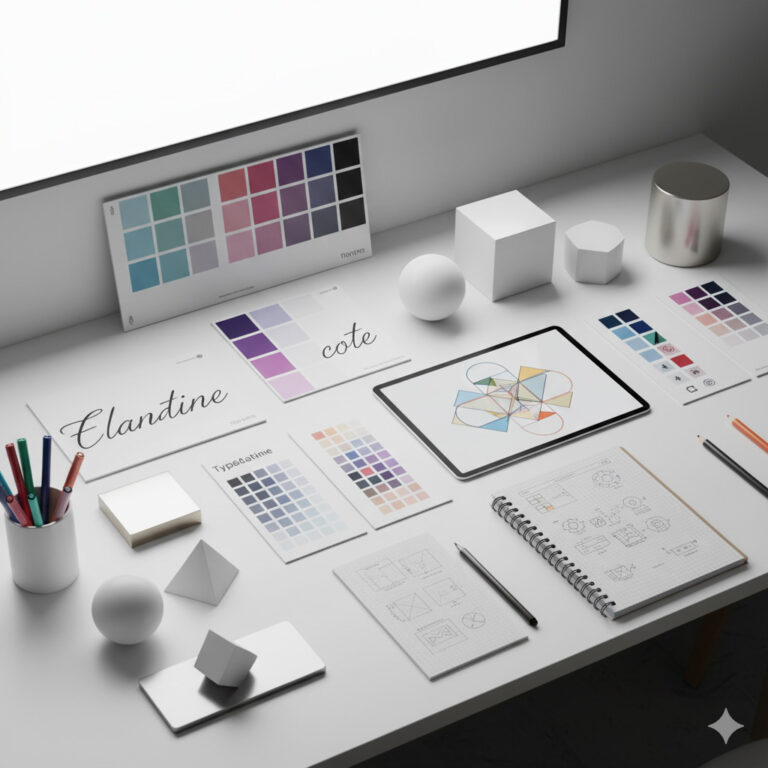The Art and Science of Modern Graphic Design: How Creativity Meets Strategy
Graphic design has evolved from a purely artistic pursuit into a strategic discipline that sits at the heart of modern communication. It’s no longer just about making things look “pretty.” It’s about crafting visuals that communicate clearly, resonate emotionally, and drive action.
At Sammyk Graphix, we believe modern design is where art meets purpose. Every color, shape, and font tells part of your brand’s story — and every decision is guided by psychology, strategy, and creativity working in harmony.
1. From Art to Communication: The New Meaning of Design
A decade ago, design was often viewed as decoration. Today, it’s one of the most powerful communication tools available to businesses.
Modern design blends aesthetic appeal with strategic intent — each visual decision supports the brand’s message, values, and goals.
Example:
- A minimalist logo communicates professionalism and clarity.
- A vibrant social media banner evokes energy and creativity.
- A structured website layout conveys trust and reliability.
Good design doesn’t shout; it speaks directly to your audience’s subconscious, guiding them toward the right impression and action.
2. The Psychology Behind Great Design
Behind every memorable visual lies an understanding of human psychology. The best designers use science to create emotional impact.
Color Psychology
- Blue conveys trust and professionalism (ideal for finance or healthcare).
- Red evokes energy and urgency (used in sales and promotions).
- Green symbolizes growth and calmness (common in wellness and sustainability brands).
Gestalt Principles
These principles explain how people perceive patterns and relationships between elements. Concepts like proximity, similarity, and closure help guide the viewer’s attention.
Typography Psychology
Fonts also communicate tone:
- Serif fonts feel classic and dependable.
- Sans-serif fonts are modern and approachable.
- Script fonts express creativity and personality.
When used intentionally, these psychological cues help brands connect with their audience instantly.
3. Strategy: The Hidden Layer of Every Great Design
Creativity is only half the equation — strategy is the glue that makes design effective.
Before a designer opens Photoshop or Figma, they should answer:
- Who is the audience?
- What emotions should the design evoke?
- What action should viewers take?
- How does this design align with the overall brand?
At Sammyk Graphix, every design project begins with a creative brief that defines these parameters. This ensures that the final output doesn’t just look good but works hard to meet business objectives — from increasing engagement to improving conversions.
4. Branding Through Consistent Design Language
Your brand’s visuals are its voice. Consistency builds recognition, trust, and loyalty.
Key Components of a Consistent Design Language:
- Logo System: Flexible versions for different formats.
- Color Palette: Defined primary and secondary colors for brand recognition.
- Typography Hierarchy: Clear font pairings for all media.
- Imagery Style: Filters, tones, and themes that convey brand personality.
- Iconography & Layout Grids: Subtle consistency that improves readability.
When all these elements align, your audience can recognize your brand instantly — even without seeing your logo.
5. Case Study: How Great Design Transforms a Brand
Example: Airbnb’s Rebrand (2014)
Before its rebrand, Airbnb struggled with recognition. The new “Bélo” symbol, simple typography, and warm color palette created a visual language built on belonging.
The result?
- Massive brand awareness growth.
- A visual identity that perfectly matched their mission: “Belong anywhere.”
This demonstrates how strategic design can transform perception — not just appearance.
6. Tools of the Trade: Where Creativity Comes to Life
Modern designers have access to an ecosystem of powerful tools. Knowing which to use — and when — makes all the difference.
Industry-Standard Tools:
- Adobe Photoshop & Illustrator: Perfect for print and logo design.
- Figma & Adobe XD: For UI/UX and collaborative design.
- Canva: For quick, accessible graphic creation.
- Blender & Cinema4D: For 3D and motion graphics.
AI-Powered Tools:
- Adobe Firefly & Midjourney: For AI-generated concepts.
- ChatGPT & Notion AI: For brainstorming and copy assistance.
- RunwayML: For motion design and video editing.
At Sammyk Graphix, we integrate both traditional creativity and cutting-edge technology to deliver next-generation results.
7. The Balance Between Creativity and Client Goals
A designer’s challenge is to blend personal creativity with the client’s business goals.
This balance requires communication, flexibility, and problem-solving.
Tips for Achieving Harmony:
- Listen deeply — understand what the client truly needs, not just what they want.
- Educate — guide clients on design decisions that benefit their goals.
- Prototype early — share drafts to avoid misalignment.
- Test — see how real audiences respond before finalizing.
Creativity without strategy can be chaotic; strategy without creativity is dull. Great design lives in between.
8. Emerging Trends in 2025: Where Design is Headed
The design world evolves faster than ever. Here are the key 2025 trends shaping modern aesthetics:
1. 3D and Motion Graphics Everywhere
Designs are becoming more immersive — think animated logos and dynamic web interfaces.
2. AI-Assisted Creativity
Designers are collaborating with AI to brainstorm, prototype, and even automate repetitive tasks.
3. Sustainable & Ethical Design
Brands are moving toward eco-friendly materials and messaging. Green design is not just visual — it’s moral.
4. Inclusive Design
Accessibility is becoming a must-have. High contrast, readable fonts, and inclusive imagery define responsible design.
5. Micro-Interactions in Web Design
Subtle animations guide users through interfaces and make experiences feel intuitive and delightful.
These trends remind us that design is always evolving — but the foundation remains human creativity.
9. How to Become a Modern Designer: Skills You Need
If you’re an aspiring designer or creative entrepreneur, success in 2025 requires more than software knowledge.
Essential Skills:
- Empathy: Understanding user needs.
- Adaptability: Keeping up with new tools and trends.
- Storytelling: Communicating messages visually.
- Brand Strategy: Designing with purpose.
- Technical Mastery: Knowing your software deeply.
Combine these with a passion for continuous learning, and you’ll stay relevant in a fast-changing industry.
10. Conclusion: Creativity Meets Strategy at SammyK Graphix
Modern graphic design is both an art form and a science — it’s where imagination meets intelligence.
From logo design to full brand systems and websites, every pixel has a purpose.
At Sammyk Graphix, we don’t just design visuals — we design experiences that communicate, inspire, and convert. Whether you’re a startup looking for identity or a business seeking digital transformation, our mission is simple:
Turning creativity into strategy.

